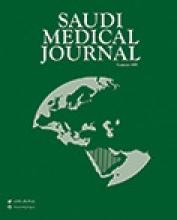Abstract
OBJECTIVE: This study aims to document the experience of uterine rupture as a serious common complication of pregnancy in some developing countries like Sudan. The study is also aimed at reviewing the main contributing factors so as to draw broad lines for a strategy of prevention.
METHODS: A retrospective study carried out at Medani Teaching Hospital, Medani City, Sudan. Case notes were reviewed for all patients with uterine rupture from 1st January 1992 through 31st of December 1997. The data was analyzed and the literature was reviewed to compare the results of similar studies.
RESULTS: Out of the total number of deliveries in that period (n=21190), 86 cases were diagnosed to have uterine rupture giving an incidence of 1:246. The main contributing factor to uterine rupture identified in this study, was poor ante-natal care (64%). One most important direct cause of uterine rupture was previous cesarean section scar with or without cephalopelvic disproportion (n=39) (45%). Seventy-six cases, had complete rupture of uterus. Subtotal hysterectomy was carried out on 69 cases (80%) and 15 cases (17%) had uterine repair with bilateral tubal ligation. Three patients developed vesico vaginal fistula (3.5%). The ureter was iatrogenically severed in 2 cases (2%). There were 6 (7%) maternal deaths and 68 (79%) perinatal deaths.
CONCLUSION: This study confirms the existence of a serious preventable obstetrical problem. Poor antenatal care, poor provision of health service and low socioeconomic standards, are the main factors contributing to uterine rupture. Those findings would suggest that both social and medical improvements will significantly improve survival in mothers with ruptured uterus and reduce the perinatal loss.
- Copyright: © Saudi Medical Journal
This is an open-access article distributed under the terms of the Creative Commons Attribution-Noncommercial-Share Alike 3.0 Unported, which permits unrestricted use, distribution, and reproduction in any medium, provided the original work is properly cited.






